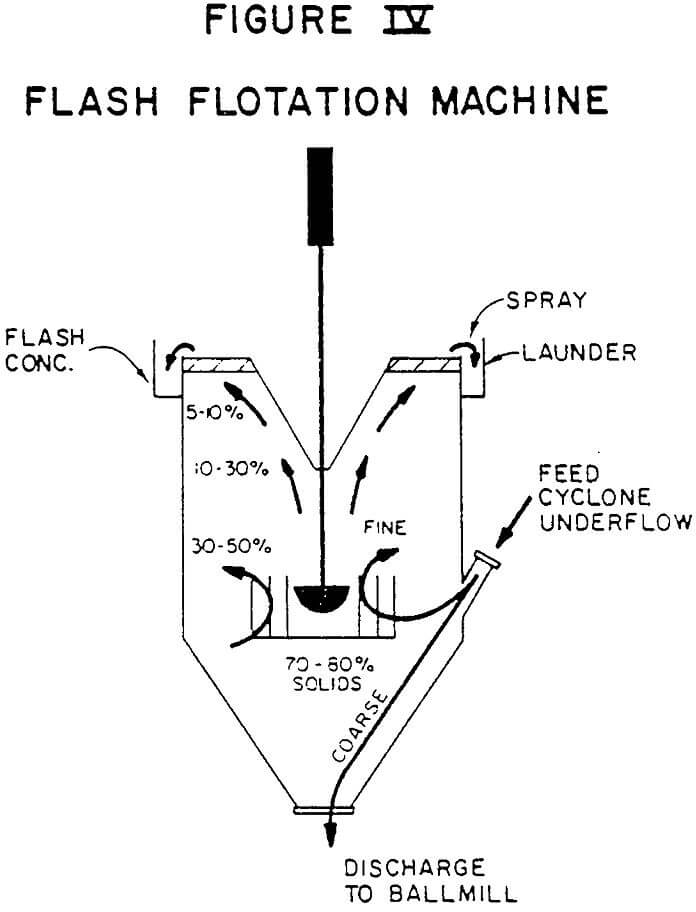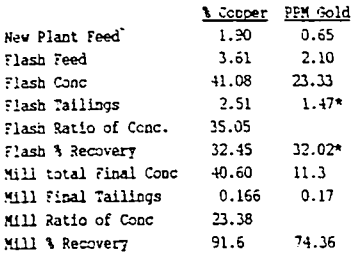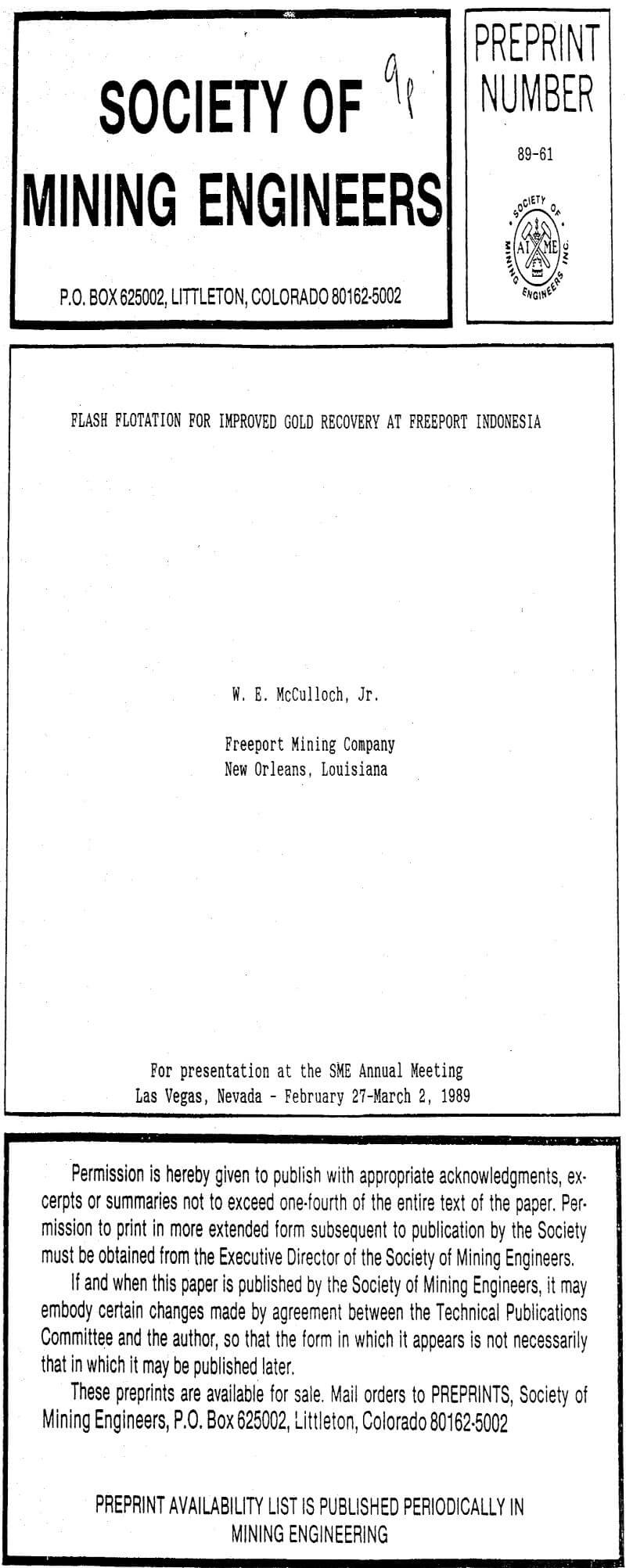The Outokumpu flash flotation concept as an approach for precious metals recovery. Concerns were:
- Could a concentrate be recovered from coarse, high solids cyclone unflow.
- Would the proposed flash flotation machine operate on 2 continuous basis or would machine be down frequently because of plugging. Freeport was well aware of the mechanical problems with unit cells.
- Could flash flotation machines with enough capacity be fit into the circuit. The Outukumpu SK80 flash flotation machine which FI had reviewed in 1984 was sized for 80 tph feed with 3 minutes retention time. The FI ball mills were operating at 220 tpd new feed with 350% recirculating load. This implied 6 to 9 flash flotation machines per ball mill were required. Such an arrangement was impractical.
Highlights from the flash flotation review in brief were:
Flash Flotation (figure IV)
- Is based on:
a) The preconcentration by gravity of relatively heavy liberated mineral (high specific gravity, Au, Cu sulfides, etc. ) particles into the cyclone underflow.
b) A high flotation rate (kinetics) for mineral particles in the 140-400 mesh (30-100 micron) size range.
c) The relative absence of gangue fines (slimes) which often degrade the flotation process. - Differs from convention flotation (and unit cells) in that not all feed is kept in suspension.
- Is floatation of classifier sands with a short retention time (1 to 3 minutes).
Flash flotation benefits claimed were:
- Increased gold, silver, and copper recoveries through reduced overgrinding of high specific gravity mineral particle which report by gravity to the cyclone underflow until ground to slime.
- A high quality concentrate which is:
a) High grade (often final concentrate grade) produced in a quick (“Flash”) flotation of liberated particles in the absence of slimes for high selectivity between the metallic minerals and the gangue.
b) Generally easier to filter because the flash concentrate is usually coarser because it is a product of coarse flotation.
A result of the April meeting FI management decided to install flash flotation in one of the two primary grinding circuits for a plant scale test if Freeport’s 3 concerns (metallurgy, mechanical reliability, physical fit) could be alleviated.
Laboratory demonstration tests were run with coarsely ground of FI ore samples. A 36% copper concentrate with 7.2 ppm (0.27 oz/t) gold was produced for a 34% copper recovery and 13% gold recovery. Other tests had gold recovery as high as 45%. Concern 1 (metallurgy) was alleviated.
Metallurgical results with an indicated 5% increase in precious metals recovery at higher concentrate grades were very encouraging. Concern 2 (mechanical reliability) was alleviated.
Outokumpu proposed the then new design flash flotation machine the Sk240 for FI. Two Sk 240 machines operating side by side in parallel would have approximately 2 minutes retention time at FI’ s operating conditions. Two Sk240 machines could be into a FI grinding section by repositioning the cyclones. Concern 3 (physical fit) was alleviated.
2 Sk240 flash flotation machines were installed in the ball mill number 1 circuit. The machines operated parallel with 50% of the feed to each machine. The flash flotation start-up on the ball mill No. 1 circuit was smooth with steady state operating achieved quickly. Initial results were very encouraging. Overall mill gold recovery increased approximately 5%.
Typical plant test flash flotation metallurgical results were:

FI believes the addition of flash flotation to the grinding circuit has decreased future conventional flotation cell volume requirements for future expansions. Flash flotation will be apart of any future mill expansions with additional grinding capacity.
